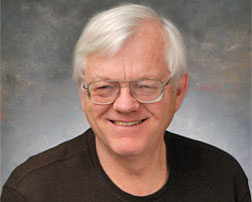- Patient lifting technology: a great case study
No lift technology can reduce injuries and improve quality of care. So why do only a minority of nursing homes use it? Read this case study.
A version of this article was published in Risk & Insurance Magazine
Nursing-home jobs involve lifting and moving of residents. This leads to worker injuries, high staff turnover and lower productivity. "No lift" or "low lift" devices have been marketed for years. Most nursing-home administrators do not buy the devices, and even then, many employees don't use them. Four barriers have blocked wide acceptance of this technology: lack of innovation budgets, staff resistance, external criticism and failure to acknowledge gained benefits.
From 1996 to 2003, an indefatigable nursing-home administrator wiled and bulled his way through these barriers, creating recurring yearly savings of $400,000 from devices he bought for $150,000.
Joe Jolliff, now retired from the Wyandot County Nursing Home in Ohio, knew nothing of this technology when three workers sustained serious patient-handling injuries in 1995. A representative from the insurer, the Ohio Bureau of Workers' Compensation, suggested no/low lift devices. A resident approached him with a $5,000 check to help pay, which opened other doors. His county board gave its financial blessing. Scarcity of innovation funding was the first barrier to overcome.
With the advice of an employee task force, he bought devices in January 1997. These didn't work well, for instance, with heavy patients. And they helped residents only with sitting and standing, not walking. Yet he measured moderate success by reduction of staff annualized turnover from 70 percent to 50 percent.
Then in early 1998 with the strong endorsement of his staff, he bought some walking devices from a second vendor. By late 2000, he bought more devices, including some ceiling lifts and beds that made lifting easier.
"You would not believe what happens to quality of care," Jolliff tells me. "I could see it at the end of the shift. Before, most workers wanted to sit and rest. Now they were dancing with the residents and taking them out for walks."
By 2001, staff turnover dropped to 5 percent. Workers' comp claims went from more than $100,000 to less than $4,000.
Jolliff surmounted the barrier of staff resistance, which he considers natural for change of this magnitude. This was in part solved by his inclusionary approach from the outset. It also drove him to gore what he calls "the lie" about patient care safety. Patient care workers are taught two-man manual lifting and body mechanics, and told that if they comply, they will not be hurt. Jolliff says the two-man technique is a myth; over time, it will fail just about every worker. He had to convince every employee. He had to make the use of no/low lift mandatory.
A third barrier was external criticism. The BWC and OSHA told him that employees would continue to lift manually and underreport their injuries. State public-health people objected that using ceiling lifts equated residents with beef carcasses. Jolliff weathered these criticisms.
Concerned about resident care problems, Ohio increased for all nursing homes a requirement for average care time per resident per day from 1.75 hours to 2 hours. Relying on his productivity improvements, Jolliff avoided this $125,000-a-year increase in staffing costs.
Jolliff saved each year $55,000 in sick time and overtime reductions thanks to lower disability days and staff wear and tear. The vast reduction in staff turnover saved $125,000 in training and orientation costs. His total annual savings: $400,000.
In part at his behest, the BWC is launching a no-interest loan program for no/low lift devices purchased by nursing homes.
Notes: The leading nursing home chains have vigorously invested in this technology. In early 2006, Oregon and Texas passed legisation promoting it among all healthcare providers.

